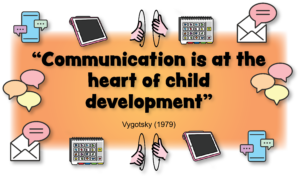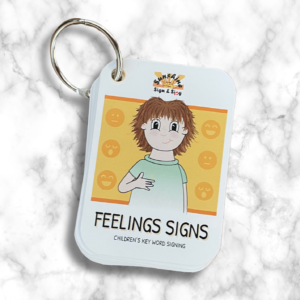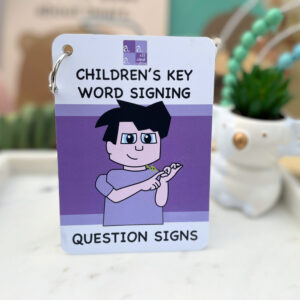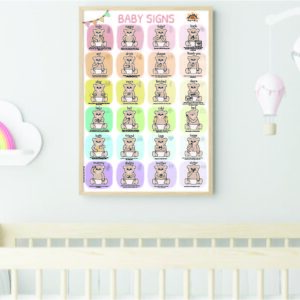School Key Word Signs – Lanyard Flashcards – access to video tutorials


















$29.95
Description
Introducing the Key Word Sign Lanyard Cards, specially crafted for school environments to support essential communication throughout the day. These cards feature a comprehensive set of key word signs, meticulously selected for their relevance and utility in educational settings.
The Lanyard Cards feature a convenient QR code linked to video tutorials demonstrating the Key Word Signs, enhancing accessibility and understanding.
The Key Word Signs included on the school lanyard cards are thoughtfully arranged in alphabetical order for ease of reference and use:
Breathe, Calm, Drink, Eat, Finish, Help, Kind, Listen, Need a Break, Next, Now, Play, Quiet, Raise Hand, Safe Hands, Sit, Stop, Think, Tidy Up, Toilet, Wait, Wash Hands, and Watch.
Crafted from durable A8 synthetic material, these cards are waterproof, tearproof, and wipeable, ensuring longevity and practicality for busy school environments. The cards are conveniently held together by a hinged ring, allowing easy access while enabling individual cards to be removed for specific activities or games.
These flashcards are a versatile educational tool that seamlessly integrates into daily routines both at school and on the go. Whether used independently or incorporated into interactive games, these cards enhance communication and comprehension, making learning more engaging and accessible for all.
Children’s key word sign is a valuable Augmentative and Alternative Communication (AAC) tool that draws upon signs borrowed from Australian Sign Language (Auslan), facial expressions, and gestures in conjunction with speech. This comprehensive approach offers children who are pre-verbal or experiencing communication challenges an effective alternative means of expression. By integrating signs into communication, this method not only facilitates expression but also aids in comprehension, providing a visual pathway for children to process and understand information being conveyed verbally.
The use of signs in combination with speech creates a richer and more inclusive communicative environment, particularly benefiting those who rely on non-verbal methods to interact and understand the world around them.





